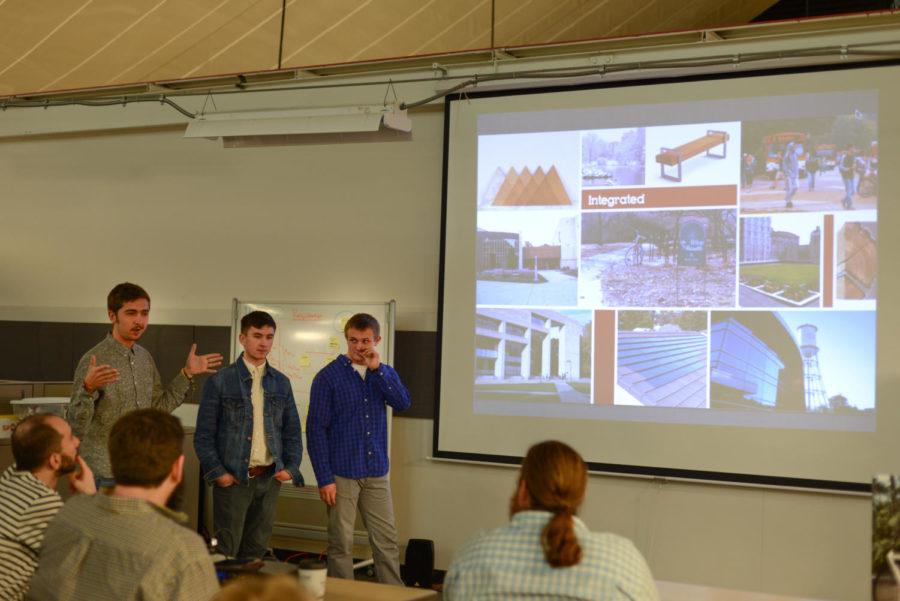Editorial: Bike share benefits: Alternative transportion solves future ISU congestion
Travis Cannon, junior in industrial engineering, presents about the “Cycle” biking system for Iowa State on March 28 at industrial design student space in the Armory.
September 9, 2014
It is no secret that there is a serious congestion issue on campus as far as the number of students during the passing hour goes. There are bikes, buses, skateboards and people speeding in every direction. This can be quite discouraging when trying to get to class on time. CyRide is often too full to catch the bus on your first attempt, or you are stuck walking behind those people on campus that stroll around like they have no place to be. This is why implementing a bike share program on Iowa State’s campus would have been a progressive measure.
Unfortunately, the bike share bill was voted down, although the vote was close. Approximately $5,500 has already been spent to have industrial, electrical and mechanical engineering students work on prototypes of these bicycles, while also getting hands on training. A bill was brought to the table to ask for another $7,477.39 to continue working on finding the bike prototypes wanted.
Money is always a concern for students, but with the bike share program, it is possible that the first half hour of use would more than likely be free. After that, the longer the bike is kept, the more the student will be charged. This is a simple plan, considering the cost of keeping the bike would hopefully help eliminate bike theft. Also, it should take much less than half an hour on a bike to get anywhere on campus. If you are taking a bike from one building on campus to another and you make it in less than 30 minutes, the bike ride is free.
One of the concerns is how our campus would handle more traffic. With the rate at which new students have been coming and the amount of people hurrying from class to class, it is possible that CyRide will no longer be able to travel on Morrill and Osborne roads in the near future. That being the case, the next fastest way to get across campus would be by bike.
If it comes to be that CyRide is no longer able to go down these congested roads, the routes could be used for bike lanes which would hopefully lead to fewer bikes on the sidewalks. Many larger cities such as Chicago and Minnesota have been using a bike share system and the programs have been successful, so the proposed system is already tailored to work on a campus with this level of congestion.
So many students have been involved with the process of getting bike share on its feet and should not have to see their work go unrewarded. GSB President Hillary Kletscher has been working on the bike share program for more than a year and the engineers working on prototypes should not have their hard work wasted. Adding a bike share program is not an added congestion threat but instead a quick and economical way to get from class to class.
If students have any comments or concerns about the bike share program at Iowa State, contact Nick Terhall, director of student affairs. Bike share has the chance to move our campus in a progressive direction, but that is not going to happen if the students do not stand up for what they want and express their desire to establish the program.







